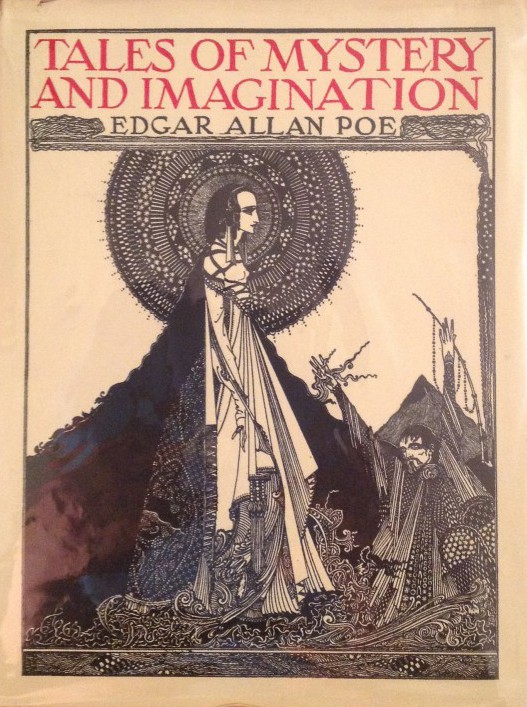Inspiring Older Readers
 posted on 21 Nov 2016
posted on 21 Nov 2016
Tales of Mystery and Imagination by Edgar Allan Poe illustrated by Harry Clarke
The extraordinary imagination of a writer like Edgar Allan Poe needs an illustrator with a mind to match. Harry Clarke seems to have been the perfect choice for this anthology of 29 tales that take the reader to some very odd places indeed.
Clarke, who was born in Ireland, is now seen as one of the leading figures of the Irish Arts and Crafts movement in the early part of the 20th century. He moved to London to find work with the publishers Harrap as a book illustrator and his first success was with a version of Hans Andersen Fairy Tales in 1916. His first edition of Poe’s Tales of Mystery and Imagination followed close behind in 1919, produced in black and white – or half-tone as they are known in the publishing trade. A later 1923 edition included colour prints which were judged to be on par with any of the great children’s book illustrators of the day. He would go on to also illustrate Goethe’s Faust and Perrault’s Fairy Tales as well as a volume of Swinburne’s poetry.

At the same time Clarke was becoming interested in the art of stained glass and became a formidable practitioner in this medium too. But his health was always a problem and restricted the amount of work he could do. By 1929 he was diagnosed with TB and sent to a sanatorium in Switzerland but died in 1931 on a journey home.
Clarke shows his influences clearly enough – there’s echoes here of William Morris, Rossetti and fellow illustrators like Dulac. But he also has a gift for the dark side of fantasy and it occurs to me that this might well have been influenced by his illness. I personally prefer the drawings in black and white because they seem to me to appropriate to the mood of Poe’s writing and it’s possible to use the interplay of dark and light to be both dramatic and ambiguous.
Clarke’s original 1919 edition of the book is extraordinarily expensive to buy now – we’re talking four figures – and some of the more recent reprints which have found their way into the remainder shops are quite poor when it comes to reproductions of the illustrations. This particular copy is a 1971 reprint by Minerva and I think it does more justice to the originals than many of the others – it’s certainly a well bound and solid production complete with gilded edgings.
The one serious drawback to books like this is their size – it’s hard to settle down with a book this big to read the tales themselves because the volume is so heavy and hard to manipulate. So the purpose of having a copy like this is all about the illustrations and they have to be tip-top to justify spending maybe £30 or £40 for the book. I’m glad to say that in this case I think the expense is entirely merited.
Terry Potter
November 2016





